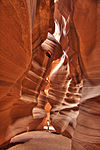Afrikaans: Southopies bevorder verdamping in die Salar de Uyuni, Bolivië
Беларуская: Саляныя капцы на саляным возеры Салар дэ Ююні (Балівія)
Česky: Hromady soli na solné planině Salar de Uyuni v Bolívii
Deutsch: Salzberge im Salar de Uyuni, Bolivien.
English: Salt mounds in Salar de Uyuni, Bolivia. (Photo: Luca Galuzzi - http://www.galuzzi.it)
Esperanto: Salkumuladoj en la Salar de Uyuni, Bolivio
Español: Montículos de sal en el Salar de Uyuni, Bolivia. (Foto: Luca Galuzzi - http://www.galuzzi.it)
Français : Récolte du sel dans le Salar de Uyuni, en Bolivie. (Photo : Luca Galuzzi - http://www.galuzzi.it)
Magyar: Száradó sóhalmok (Salar de Uyuni, Bolívia) (Luca Galuzzi felvétele - http://www.galuzzi.it)
Italiano: Cumuli di sale nel Salar de Uyuni, Bolivia.
日本語: ウユニ塩地( ボリビア)
Nederlands: Zoutheuvels voor de zoutwinning op de Salar de Uyuni in Bolivia. (Foto: Luca Galuzzi - http://www.galuzzi.it)
Polski: Kopce solne w solnisku Salar de Uyuni, w Boliwii (fot. Luca Galuzzi - http://www.galuzzi.it)
Português: Montes de sal de Salar de Uyuni, na Bolívia.
Română: Movile de sare la Salar de Uyuni, Bolivia.
Русский: Соляные насыпи на солончаке Уюни, Боливия.
Slovenčina: Hromady soli na soľnej planine Salar de Uyuni v Bolívii.
Svenska: Högar av salt på Salar de Uyuni i Bolivia, som är världens största saltöken.
中文(简体): 玻利维亚 乌尤尼盐沼内的天然盐坨
中文(繁體): 玻利維亞 烏尤尼鹽沼內的天然鹽坨





